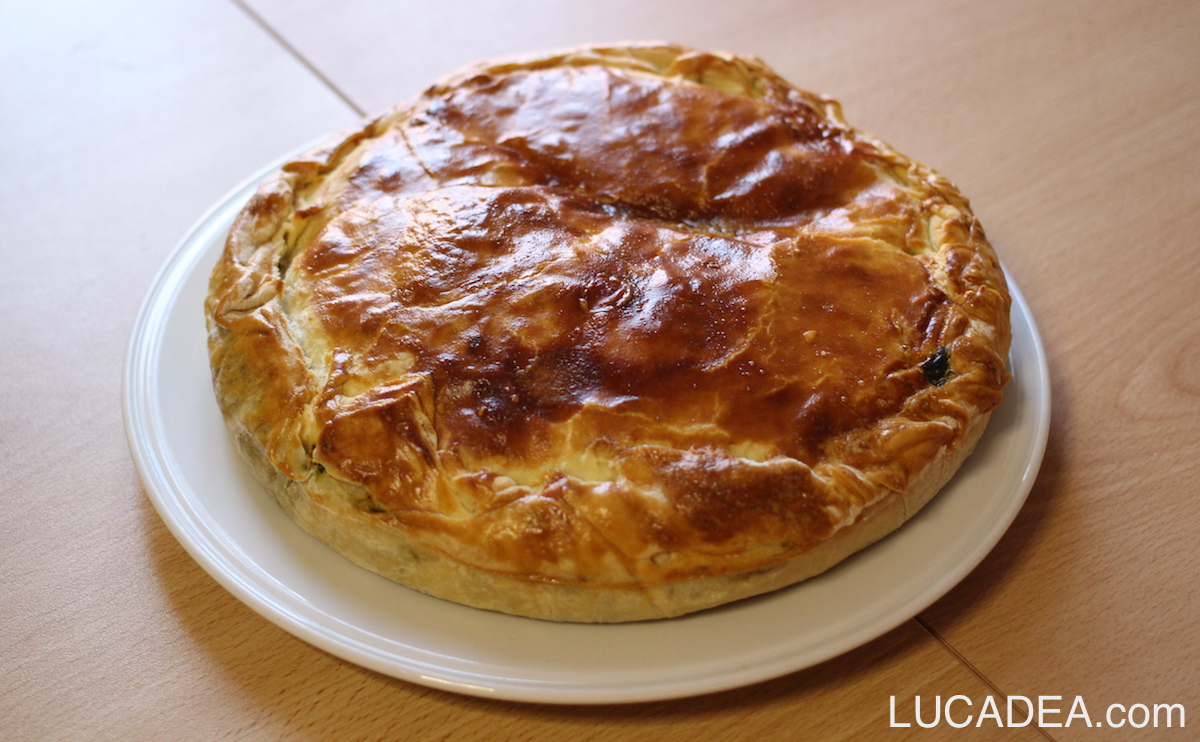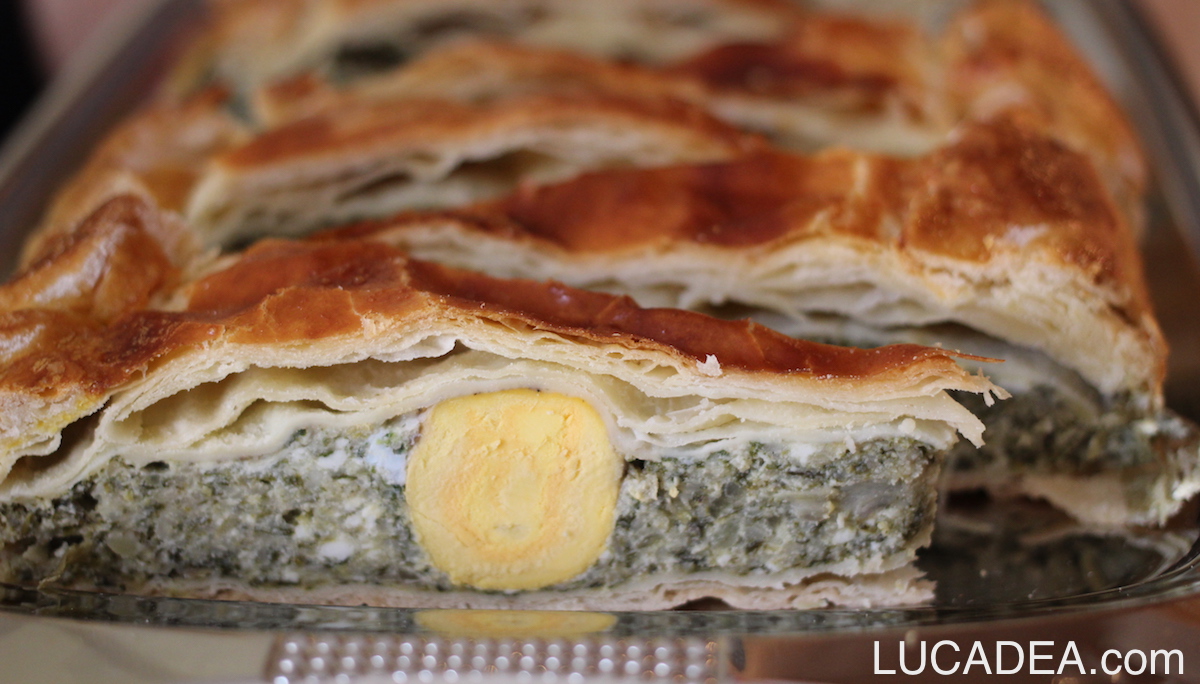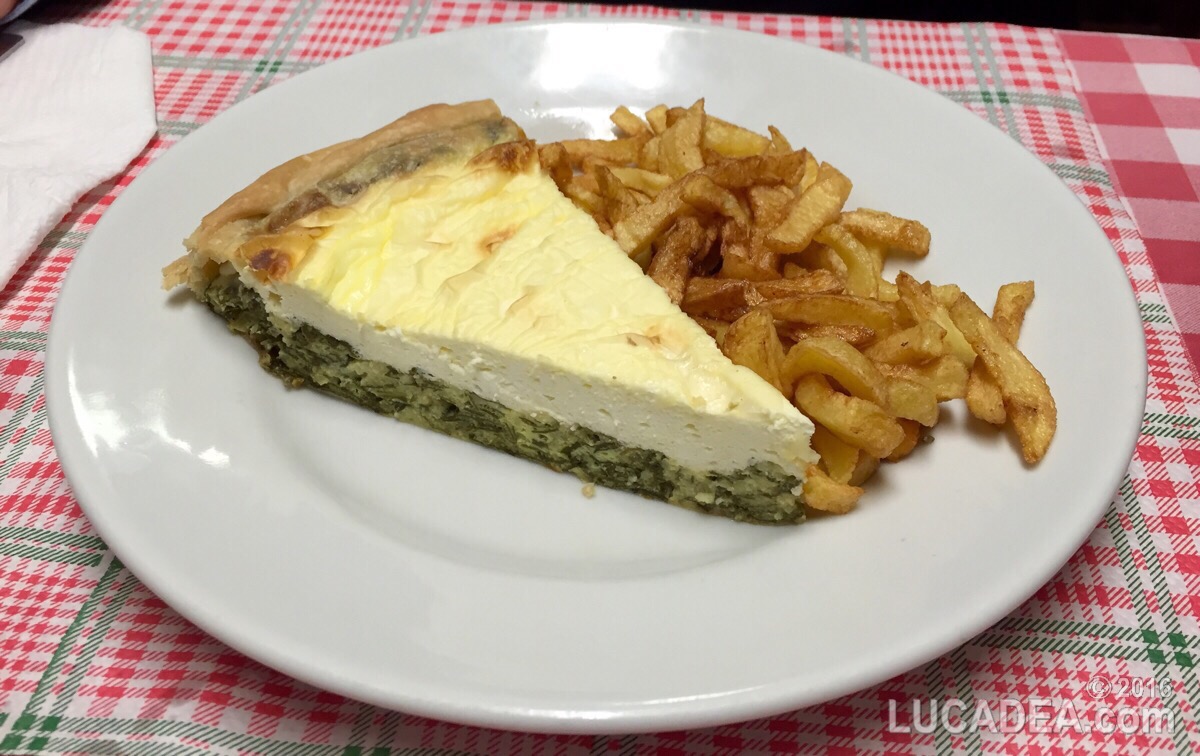The real Pasqualina cake of my house, the recipe.
The Pasqualina cake is a typical Ligurian dish that we make quite often in my house and that my wife Emmi makes perfectly, perhaps not following the recipe perfectly but in a way that we (and our guests) like very much.
It is a vegetarian dish that was once made for Good Friday, which was eaten that day because it was vegetarian but which could be taken on a trip to the countryside or to the seaside that, weather permitting, was done on Easter Monday.
Nowadays this cake is rightfully part of the great series of Ligurian cakes that are made and eaten throughout the year.
I also have a wonderful memory of this dish from many years ago: the Pasqualina cake from Marcenaro's shop, but regarding the specialties of this great shop, so many memories are coming to mind that it would be better if I talked about it on another occasion... but I promise I will.
Unfortunately I have never seen Mr. Marcenaro prepare the Easter cake so you will have to settle for reading how we make it at home.
First of all, we need to talk about the puff pastry: once it was said that the layers of the puff pastry should be 33, like the years of Christ, but we do something much simpler, using a dough made with flour, a little olive oil, water, a pinch of brewer's yeast (dissolved in water) and a pinch of salt. To do it even faster, you can also use a puff pastry from the supermarket, but it is better to choose one of the best quality. At home, however, we make the dough ourselves first and let it rest for the entire time dedicated to preparing the dough.
The ingredients are always the same but it is important that the vegetables are very fresh and always in season.
Swiss chard is available all year round but during the Easter period it would be a shame not to use, in addition to Swiss chard, artichokes and, if possible, borage.
After boiling the vegetables separately, we cut them quite finely and the artichokes more coarsely, then sauté everything in olive oil with sage and a clove of garlic. Afterwards, once the vegetables have cooled, we mix them with ricotta, beaten eggs, and grated parmesan cheese. We check that the mixture is salty and add a pinch of pepper.
We then roll out the pastry on an oiled baking pan, cover with our dough (depending on the quantity the cake will become higher, preferably at least three centimeters), make some small depressions in each of which we break an egg, being careful not to break the yolk ... the idea would be that each nice slice also corresponds to an egg. We cover with at least two or three more layers of pastry, as thin as possible.
Once the cake is closed, we will make a small braid of rolled dough around it and finally brush everything with beaten egg slightly diluted with water. A classy touch would be to put a straw in a little hole under the topmost sheet of pastry and blow delicately so that this sheet of pastry swells and gives a more important appearance to the cake. We will then cook everything at 180° until the Pasqualina takes on a nice amber color.
Here are four beautiful photos of the cake:





